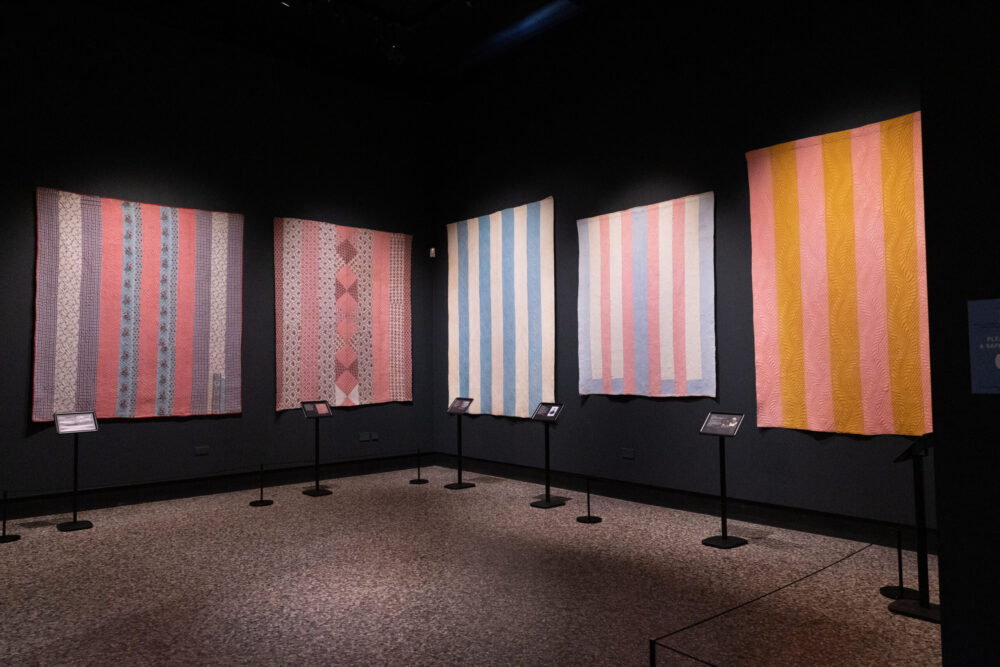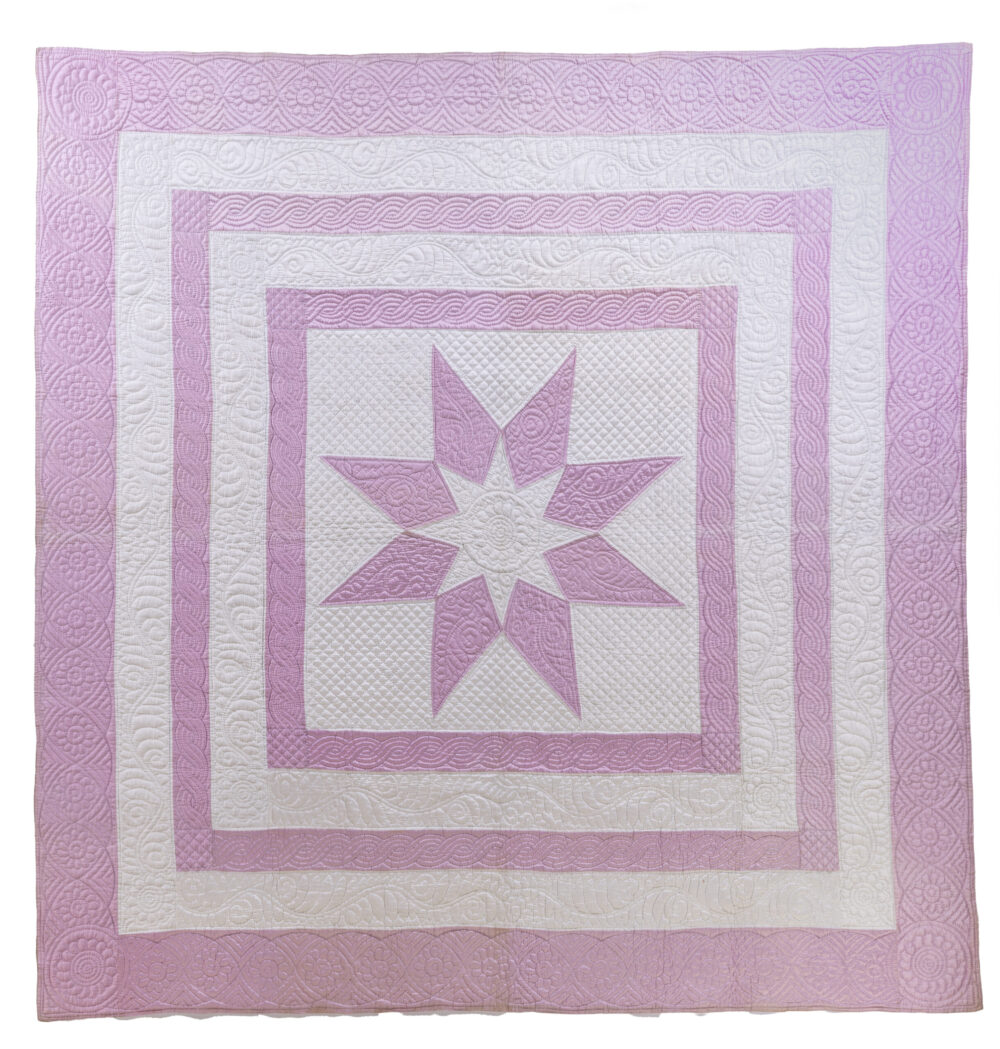‘North Country Quilts: In Celebration of New Acquisitions’ at The Bowes Museum
In the cultural landscape of northern Britain, North Country quilts are textile gems. With this new exhibition, The Bowes Museum underscores not only the splendour of these quilts, but also the significance of quiltmaking in the cultural life of northern England over the past two centuries. In the spotlight are twenty-six new acquisitions to the museum’s nationally important quilt collection, dating from the early 1800s to the present day; all have been acquired in the new millennium. The quilts will be on display both at The Bowes Museum, Barnard Castle, County Durham, UK and online until 9 January 2022.
North Country quilts have a distinctive style. Particularly characteristic are the patterns stitched through the quilt layers; subtle and understated, they create a soft sculptured surface of quiet beauty. The characteristic patterns that define the genre can be found on a variety of quilt styles.
As the tradition of North Country quilting matured in the later nineteenth century, two styles came to predominate: the Wholecloth quilt made from a single type of fabric, a perfect ‘canvas’ for the quilter to display her stitching skills; and the Strippy quilt made from broad pieced strips with quilting designs running down the strips. Both types are well represented in the exhibition.

Installation view showing the Strippy Quilts section of ‘North Country Quilts: In Celebration of New Acquisitions’.
Wherever possible, in acquiring these new quilts The Bowes Museum has also been assiduous in collecting their stories: who made them—where, when, and why. Though quilts themselves can be admired for their remarkable aesthetic, it is the backstories that provide their social and economic contexts. All too often in the past, quilts have arrived in public and private collections with little or no provenance. With known information, the quilts in this exhibition enhance the history of North Country quilting and affirm its connection with the lead mining communities of the North Pennine Dales, the pit village communities of County Durham, and the farming communities of northern England as a whole.
In the 1880s, another facet of North Country quilting evolved. In the village of Allenheads, a lead mining centre in the North Pennine Dales, a unique trade known as ‘quilt stamping’ arose whereby skilled practitioners and their apprentices drew out quilting designs onto prepared fabrics. The marked tops were then posted to customers to make up as quilts. Amongst the quilt stampers, one woman became especially well known: Elizabeth Sanderson. She worked for over 40 years as a quilt designer but her particular claim to fame is the stunning Star quilt design she developed and taught to her apprentices. In their many two-tone colourways, the Sanderson Star quilts—as they are now known—are highly prized historic pieces in the textiles market and two examples are included in the exhibition.

‘Sanderson Star’ quilt, maker unknown, design attributed to Elizabeth Sanderson of Allenheads, ca. 1920-1935. 2.22 x 2.26 m (7′ 3″ x 7′ 5″). The Bowes Museum.
Quilting today is now a vibrant art form amongst textile practitioners and while traditional North Country quilts remain popular, contemporary quilters and textile artists have also sought to reinvigorate traditional forms. This too has been showcased within the exhibition with remarkable new quilts from two contemporary quilters: Pauline Burbidge from the Scottish Borders and Leila Anderson of Durham City.
Crafted through enterprise, community and family endeavour, and not infrequently hardship, North Country quilts are celebrated in this new exhibition as the regional treasures they have become.
The exhibition is accompanied by a catalogue, and the book which accompanied the larger 2000 exhibition ‘North Country Quilts: Legend and Living Tradition’ has been reprinted. Both are available from the museum website.
Full exhibition review in HALI 209.



























Comments [0] Sign in to comment